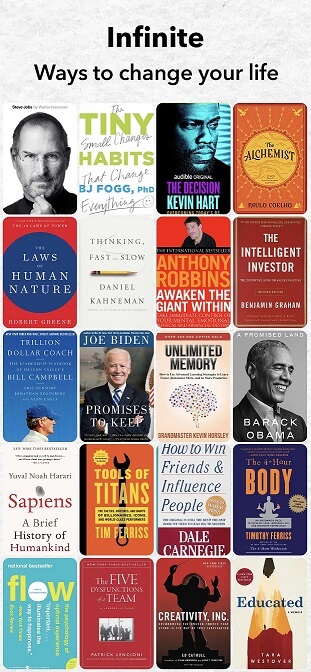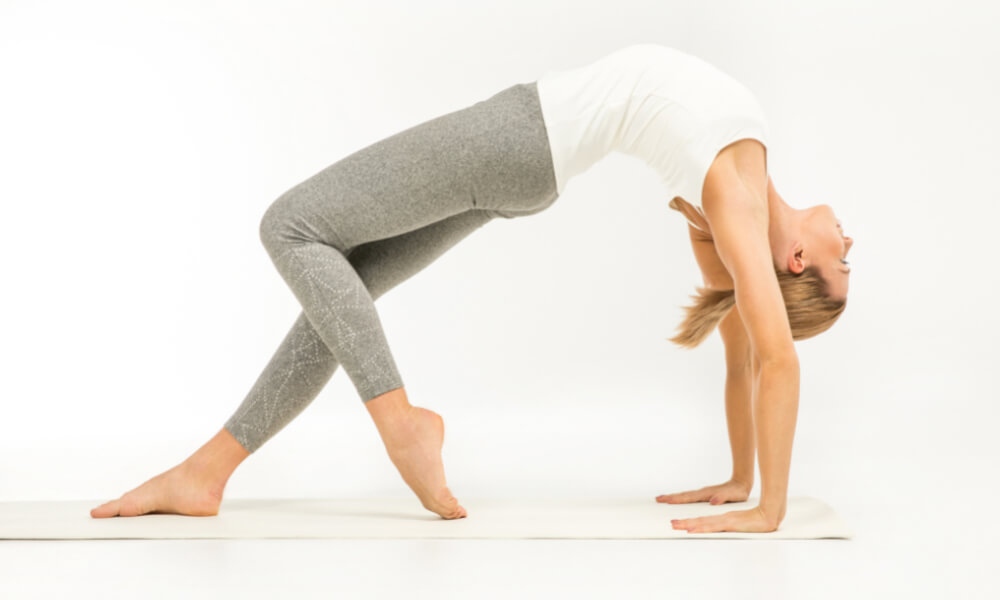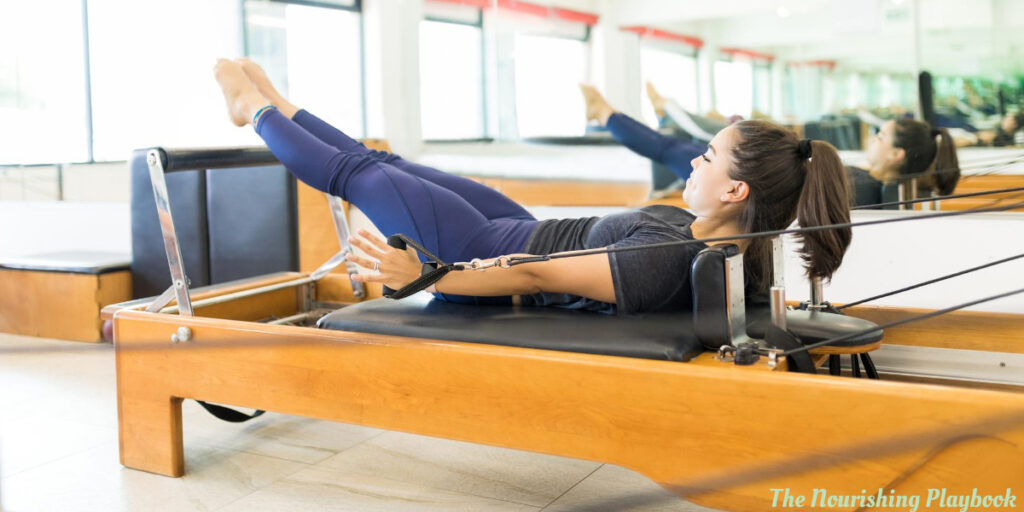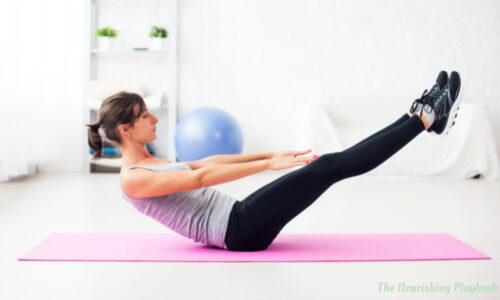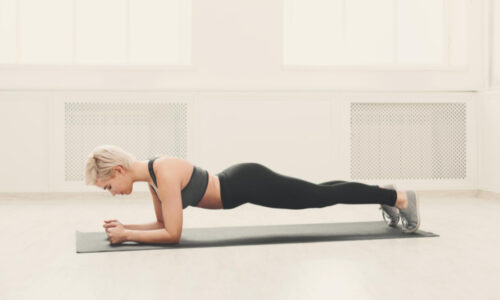Ever wondered how is Pilates different from Yoga, despite being two forms of low-intensity exercise?
Well, at first glance it’s hard to tell – both involve slow, deliberate movements and are great for relaxation, flexibility, and toning your body. Also, both practices occupy the same space of body control, balance, and core-strength building – but offer distinct benefits that are worth exploring.
But when you dig a little deeper, you’ll find that the differences between yoga and Pilates go way beyond the surface.
So, let’s look at how yoga differs from Pilates and what unique possibilities await when combining them. From focusing on mindful breathing to precise movement, skill-building to strength training, it’s easy to see why both exercises make a perfect pairing for an overall balanced practice.
Ready to reignite your inner warrior? Let’s dive in and discover the depths of an invigorating experience that can take your workouts to the next level.
How is Pilates different from Yoga?
Pilates and Yoga are two popular forms of exercise, but the two practices are quite distinct from one another. Yoga is a system of poses that govern the body and mind, while Pilates is a system of exercises that promote physical strength and flexibility.
The key differences between Pilates and Yoga can be found in their emphasis on particular aspects of physical fitness.
- Pilates typically focuses on low-impact exercises that emphasize the strengthening of the body’s core musculature. It is designed to help improve posture, strengthen the abdomen and back muscles, as well as promote muscular symmetry in the body.
- Yoga emphasizes flexibility, strength, and balance through a variety of poses that are often held for several minutes at a time. It is more focused on developing flexibility through stretches and poses that require an individual to hold a certain posture for an extended amount of time.
While both Pilates and Yoga require some of the same tools, such as mats, blocks, and elastic bands, traditional Pilates tends to use more equipment like weights and reformers. Whether you’re aiming for increased core strength or greater flexibility – or if you just want it all – each practice provides its own unique benefits! It’s up to you whether a solely yoga-focused approach is best for your goals…or if blending the two practices together could be even better.
Physical benefits of Pilates vs. Yoga
Yoga is a practice that prioritizes lengthening and stretching muscles, as well as concentrating on breathwork to decrease stress levels and boost mental health. This exercise also increases the mobility of joints, thereby decreasing your chances of injuries from rigorous activities or sports.
Whereas Pilates is an exceptional form of exercise that tones muscles, enhances your core strength, and targets numerous muscle groups such as the abdominals, glutes, back arms, and legs. It can improve balance and helps alleviate back pain, neck pain, and shoulder tension through improved posture and alignment.
Nevertheless, both forms of exercise offer countless advantages for your health such as greater elasticity, enhanced coordination and circulation, improved stamina, superior balance, and prevention of injuries from everyday activities.
Emotional and Mental Benefits of Yoga and Pilates
Practicing either yoga or Pilates can lead to improved mental and emotional health through self-awareness and mindfulness. Both practices teach breathing techniques that help focus the mind and provide mindfulness techniques, mediation practices, and intentional movements which can reduce stress and anxiety, and improve concentration and self-confidence.
Overall, practicing pilates or yoga regularly can be transformative for one’s mental wellness, allowing for increased focus, improved concentration, reduced feelings of stress or anxiety, better self-image, greater self-acceptance, and improved overall sense of wellbeing. Both disciplines are excellent tools for improving the overall mental health of individuals who practice them regularly.
Pilates: Flexibility With Focus
Pilates is a low-impact form of exercise that improves muscular balance, joint range of motion, posture, and coordination. It does not require any equipment and is ideal for those with injuries or back problems.
Strength and Flexibility
- Pilates improves strength, flexibility, and posture through controlled movements.
- It works by engaging the deep muscles of the body in order to create balance and stability.
- The movements help strengthen the abdominal muscles that support your spine during activity as well as those all-important hip stabilizers.
- It will improve alignment throughout your body resulting in better posture and improved performance with any physical activity you undertake.
- It improved cardiovascular conditioning as some classes incorporate aerobic moves within the workout.
- It incorporates stretching into its workouts, allowing for increased flexibility and range of motion.
Proper Technique
Joseph Pilates, the founder of pilates, created an exercise routine that focuses on both mental and physical benefits and must be done with the correct form to avoid injury.
To ensure the proper technique is followed during Pilates exercises it is necessary to understand the principles behind them. The main principles behind Pilates are breath, precision, control, and concentration. Practicing these four principles will help you perform each exercise correctly, allowing you to achieve better posture, strength, and flexibility while avoiding injury.
What is a Pilates Class like?
A typical Pilates class usually involves a mat and props like light weights, resistance bands, balls, and other equipment for a more intense experience. There are a few forms of pilates classes which include the following:
- Mat Pilates, also known as mat work, is the most common type of Pilates class and usually consists of floor exercises that focus on core strength, balance, flexibility, and posture.
- Fusion pilates classes are variations of pilates that incorporate other disciplines like barre, cardio, dance, strength, and yoga. It can create a more interesting and better workout for people looking to spice up their type of workout.
- A reformer is also sometimes used, which adds an element of resistance to different exercises.
The pilates instructor will typically guide participants through several sequences of movements that target different areas of the body while focusing on proper form and breathing techniques.
No matter what type of Pilates class you choose to attend, you can be sure to receive a challenging workout that increases your physical strength, balance, and flexibility while providing relaxation at the same time.
Yoga: Mindful Movement
Relax and destress with Yoga
Regular yoga practice is a great way to relax and destress for multiple reasons.
- First, yoga can be used to help to bring the body and mind into a relaxed state by using slow, controlled movements and breathing techniques which help to focus the attention on the present moment.
- Additionally, yoga helps to release tension in tight muscles by focusing on areas with deeper stretching.
- Lastly, focusing on poses, breathing techniques, and relaxation can help reduce stress levels since it encourages mindful awareness and gratitude for one’s body and spirit.
Yoga is a great way to relax and destress due to its holistic approach to physical and mental self-care that can be practiced anywhere at any time.
Posture, Balance, and coordination with Yoga
- Yoga is a great way to improve posture, balance, and coordination.
- Regular practice can help to improve your body awareness so that you become more in tune with how you’re holding yourself and how your body is moving.
- The poses require correct alignment of your head, shoulders, hips, and feet to ensure that the pose is done correctly. This teaches your muscles to move into the right positions without thinking about it too much.
- It can also be beneficial for balance and coordination. The practice involves a lot of movements that involve balance such as standing on one leg (Virabhadrasana I and II) or transitioning between poses while maintaining balance (Chaturanga Dandasana).
- The slower movements involved in yoga sequences allow for your brain and nervous system to connect and coordinate with the different parts of your body. This helps build better coordination and control over your movements.
Strength and Flexibility
Yoga focuses on developing flexibility while increasing muscle strength. It works multiple muscles throughout the entire body, with specific postures designed to target particular areas such as hips, hamstrings, or back muscles.
Unlike Pilates which predominantly focuses on small muscle groups holding isometric contractions (movements without any visible movement), yoga involves larger “flow” movements that can improve overall coordination as well as a range of motion throughout the entire body.
Furthermore, many yoga poses use your own body weight for resistance rather than weights or machines. This allows for gentle but effective strengthening, even if you have limited access to fitness equipment or funds.
Awareness and Mindfulness
Yoga is a powerful tool for creating self-awareness and mindfulness in both mind and body. Through yoga, we can learn to pay attention to the present moment, our physical body, and our thoughts without judgment. This allows us to gain insight into our true nature and create a greater connection to ourselves.
By regularly partaking in yoga, we can become more aware of our physical sensations, emotions, and mental states. Through this process, individuals can develop a greater understanding of their unique needs and how to better take care of themselves moving forward.
Yoga also teaches us how to be in tune with our internal environment so that we can notice signs of stress or emotional distress before they become too overwhelming. It promotes relaxation practices such as deep breathing, which work to calm the nervous system and help individuals have a clearer perspective on life’s challenges. These components contribute to self-awareness and mindfulness.
What is a Yoga Class Like?
A yoga class typically begins with a warmup and centering session, followed by a series of poses designed to increase strength, flexibility, balance, and relaxation. Depending on the type of yoga being taught, from hot yoga to yin yoga, the teacher may guide students through a series of standing or seated postures or may focus on breathing techniques and meditation.
Yoga typically involves holding various poses, or asanas, for a period of time in order to achieve better balance and flexibility. When practicing yoga in a class setting, props such as blocks, straps, or blankets can be used to help you get into more challenging poses.
A typical yoga class closes with a relaxation period, often referred to as “savasana” or “corpse pose”. During this time, you will lie down on your mat in a comfortable position and allow your body to relax and rest deeply.
The overall atmosphere of the yoga class is intended to be supportive and non-competitive; the teacher provides gentle instruction throughout the practice so that all students feel comfortable regardless of their experience.
How to Choose Between Yoga vs Pilates
When it comes to choosing between yoga and Pilates, it all depends on your goals and what you are looking for in a workout. Both forms of exercise offer significant benefits, but each has its own unique approach.
- Yoga focuses more on poses and breathing techniques that help to strengthen the body, improve flexibility and promote relaxation.
- Pilates exercises tend to focus more on core strength and stability, helping with posture and overall body alignment.
If you are looking for an exercise routine that offers more intense workouts, then Pilates may be the right choice for you.
However, if you want something more soothing yet still effective at strengthening your body, then yoga may be the way to go. The differences between Pilates and yoga can also help you decide which one is best suited to your needs – while Pilates will help with core strengthening and posture alignment, yoga may provide better relaxation benefits.
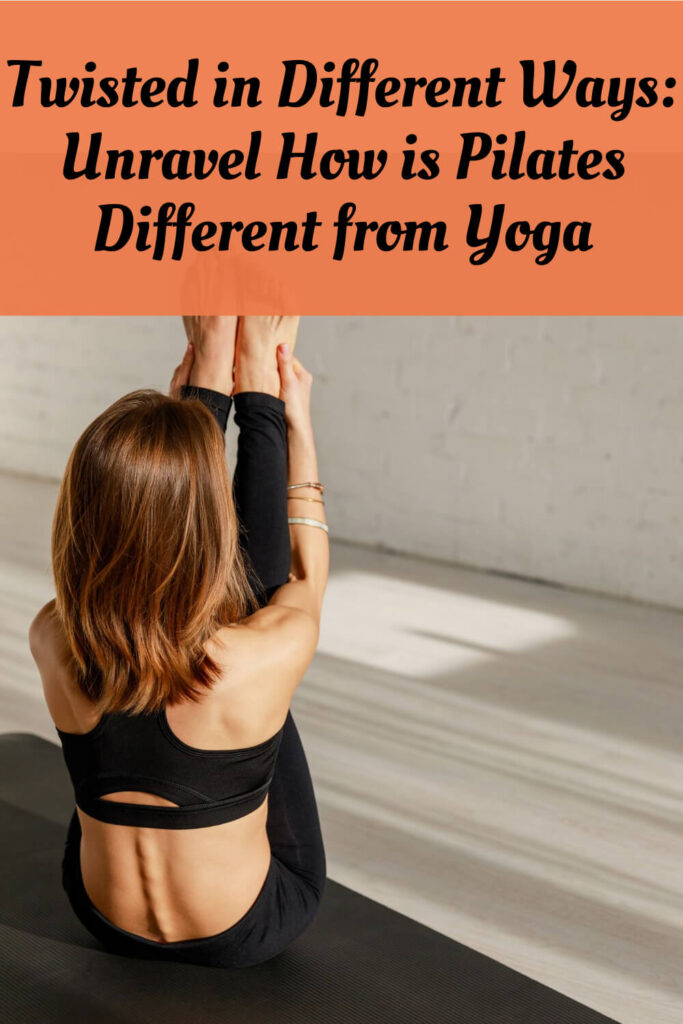
Wrap Up
It is beneficial to try both Pilates and Yoga for a holistic approach to physical fitness. Pilates focuses on strength, posture, and balance to create long, lean muscles, whereas yoga provides an intense stretch through breathing techniques that increase flexibility and reduce stress.
Combining the two practices offers a comprehensive program that can achieve both strength training along with relaxation. By strengthening the core muscles you will gain greater control of your body while improving your overall balance and coordination. It will also help reduce injury risk as they work together to create full-body muscle symmetry and stability.
Ultimately, this combination can offer a comprehensive practice that not only creates physical health but also mental wellbeing to help you lead a healthier lifestyle.
